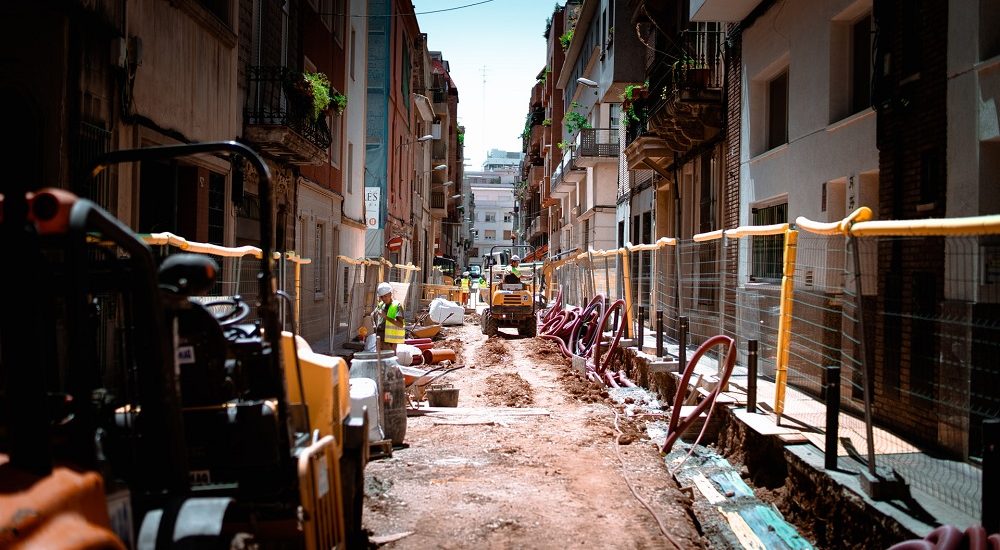No matter what type of foundation you have, underpinning a house means shifting the structure’s load to the ground that can support it. Piers used in underpinning go deep into the weak soil until they reach the load-bearing level.
When Does A House Need Underpinning?
Sloping floors are often an early sign that your foundation may need attention. If you notice your floors sloping or uneven, it could indicate that the foundation is settling unevenly due to soil movement or deterioration. It’s essential to address these issues promptly to prevent further structural damage to your home.
A house needs to be underpinned when the house’s foundation is no longer able to bear the load of the house. This is not usually a problem with the foundation but with the soil beneath it. There are different soil types, and not all of them are strong enough to support a heavy foundation built on top of it. You need to hire a contractor for underpinning your house and they will test the soil before start their process. Here, you can find different types of soil where you need to go for this process:
- Extensive soil: This is soil that has a lot of clay. When it gets wet, it swells, and then when it dries, it shrinks to the same amount. This swelling-shrink cycle – which usually occurs on a seasonal basis – creates movement in the soil, which puts pressure on the foundation.
This can create a void at the bottom of the foundation. Soil that has not been adequately compacted before construction – soil removed from a construction site and then backfilled needs to be well compacted before anything can be built on top.
If this is not done, the structure will almost certainly feel a differential settlement, which means the system is settling unevenly on the ground. The differential settlement puts tremendous pressure on a foundation and can result in severe structural damage. - Soil Erosion: This can happen if there is poor drainage system installed in the house.Large trees around the house absorb all the moisture – they can dry out and shrink the soil, creating a void under the foundation. In this case, you need to add some anchors to make the foundations stable.
- Soil Crawl: Soil crawl is a phenomenon where the soil on the top of a hill slowly descends to the bottom of the mountain. Clay creams can cause lateral movement in houses built on hillsides.
Other problems that can make a home’s underpinning necessary include:
- Natural Disasters: Earthquakes, floods, droughts, and sinkholes can all cause structural damage.
- Poor construction:Sometimes, the problem is not the soil but how the house is built. Probably the contractor built the house without considering the type of soil. Apart from that, adding a story to a home will add significant weight to the foundation. This may require underpinning a home before new construction begins.
Types of underpinning
There are several methods for underpinning a house. Most commonly used:
Push Pierce
Heavy-duty steel push pier (also called resistance pier) drives the load-bearing soil deep using hydraulic pressure and building weight. Once they are in place, the synchronized hydraulic jacks lift the house to the top.
Helical Pierce
Helical piers get their name because they have heels and look like a colossal corkscrew. They turn to the ground until the load carriers reach the bottom.
Perforated concrete pier
Houses built on the edge of a hill are susceptible to an event known as crawling. Over time, this can cause lateral movement of the place, leading to structural damage. Drilled concrete piers go deep into the bedrock, stopping this lateral movement and stabilizing the foundation.
Conclusion:
Without a personal inspection, we can’t say how much it will cost to underpin your home. This is because of the many variables involved, including the cause and extent of the damage, how easy it is to get into the foundation, whether we need landscaping or concrete removal/replacement, selected repair solutions, and more.
Helical Piers Installation is a specialized technique employed by contractors when the stability and foundation of a house are compromised. When the existing foundation cannot bear the load or needs reinforcement due to various factors such as soil issues, structural damage, or settling, the installation of helical piers becomes imperative.

